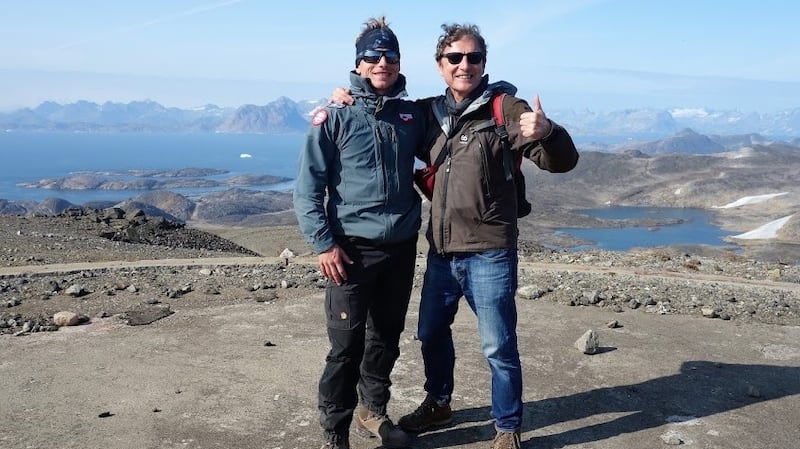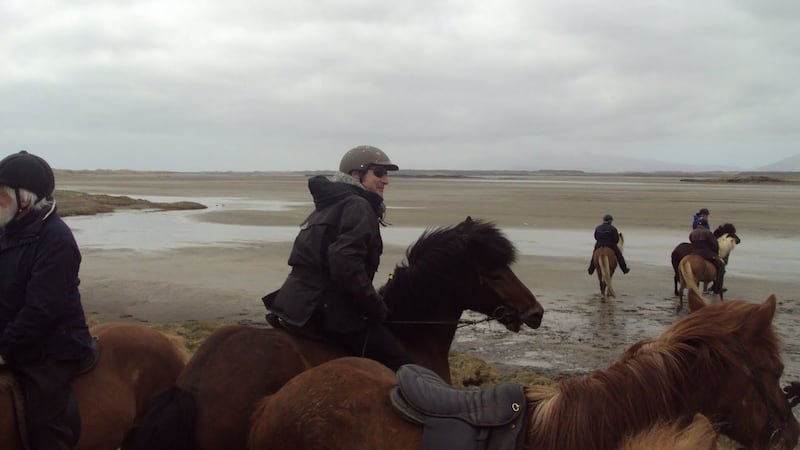Neil McMahon is a Limerickman who has lived in Iceland for five decades. He went there as a postgrad student after finishing his degree in history and archaeology at University College Cork. After teaching at all levels of the Icelandic educational system, McMahon is now a guide in Iceland and East Greenland
On a blustery September day 47 years ago I boarded a Pan Am flight from Shannon to Chicago that made a brief stopover in Iceland. I noticed I was the sole passenger disembarking there, a country reputed to have been discovered by St Brendan in the sixth century.
Even though it is almost half a century ago, I can still vividly remember many of my first impressions of Iceland: going through a US military checkpoint when exiting Keflavik international airport; the rugged treeless landscape sculpted by volcanic activity; the locals speaking a language I didn't understand a single word of at breakneck speed, and the big American cars I'd only seen in movies.

So here I was in Iceland of the early 1970s, a young Limerick lad fresh out of UCC with a degree in history and archaeology and an H Dip. A year's study on a scholarship at Iceland's national university lay ahead.
First there was a three-month intensive course in Icelandic, not the easiest of languages to take on. Icelandic is a highly inflected language, and because of the country’s isolation through the centuries it has retained many archaic features from Old Norse. My plodding progress during those first few months meant it took an eternity for me to string a few coherent sentences together.
But while my inability to express myself adequately in Icelandic was frustrating, there was much to gladden the heart. There were the regular outdoor swims in the geothermal waters of the neighbourhood pool and my first sight of the Aurora Borealis illuminating the Arctic winter sky. There were horse rides along vast coastal beaches and my first hike up and on to the Snæfellsnes glacier immortalised in Jules Verne's Journey to the Centre of the Earth.
After my year was up I needed to decide what my next step would be. I knew teaching jobs were scarce in Ireland, and I sensed my progressive opinions wouldn't sit well with conservative Catholic management. Glancing through the local newspaper, I saw an ad for an English teacher in a new secondary school and decided to apply. Several days later I was called for an interview and landed the job. Leaving the principal's office, I could never have imagined that I would end up teaching at this school for more than four decades and be its longest serving teacher.
In the classroom the relaxed atmosphere caught me by surprise. Here was an environment free of the them-and-us antagonism that too commonly exists between students and teachers. Teachers and students used first names. In Iceland the custom is to use first names, irrespective of social rank or social setting.
Beer was associated with the colonial power Denmark and therefore considered unpatriotic to drink
Descendants of farmers and fishermen, Icelanders are the salt of the earth, but, as with every nation, I discovered they had a quirky side, at least when it came to dogs and beer.
I soon noticed there wasn’t a single dog to be seen in the city; apparently, dogs were banned in Reykjavik from 1928 until 1978, as they were considered farm animals and so unsuited to life in a city. Also, dogs often had the tapeworm echinococcosis, which can be transmitted to humans and cause serious health problems.
A more immediate concern was to realise there were no pubs and no beer. The ban on beer lasted from 1915 to 1989 and was for the most part politically motivated, not unlike the GAA's ban on foreign games. Beer was associated with the colonial power Denmark and therefore considered unpatriotic to drink.

In 1996 the school staff went to Greenland as part of a four-day trip to learn about the Greenlandic educational system and explore the southeast of the country where Erik the Red established the first Norse colony in AD 985. I was completely awestruck by the dramatic beauty of Greenland and very curious about the history and culture of the indigenous people. This was a place I desperately wanted to return to.
All Icelandic teachers are entitled to a one-year paid sabbatical during their career, so in 2010 I returned to university and qualified as a tour guide. Here was a job I could do during my summer vacation and also pursue full-time once I retired from teaching. As luck would have it, I landed a job with a US company offering extended tours in Iceland and Greenland. After west Clare, east Greenland has now become like a second home, and over the past decade I’ve made two or three trips there each summer.
According to Norse mythology, the three Norns (powerful maiden giantesses) at the foot of the tree of life spin the threads of one's destiny into an elaborate tapestry. Like everybody, I have no notion when they will cut the thread and end my life. So far, however, I'm not at all unhappy with the interesting and unexpected pattern they've chosen to weave.
If you live overseas and would like to share your experience with Irish Times Abroad, email abroad@irishtimes.com with a little information about you and what you do









